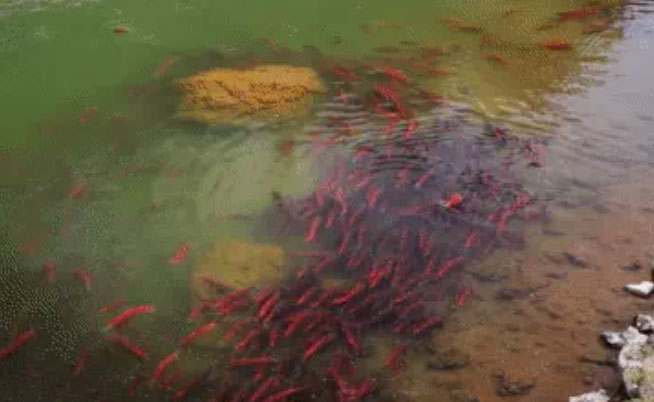Hundreds of tourists have been drawn to this major event.
Every four years, around the end of October, Bristol Bay in Alaska welcomes a spectacular migration of 32 million sockeye salmon (scientific name: Oncorhynchus nerka). The movement of these salmon creates a breathtaking scene that attracts numerous visitors.

Sockeye salmon migration.
It is estimated that over 200,000 people flock to the rivers where the salmon migrate to witness this fascinating phenomenon. Local residents even organize a Sockeye Salmon Festival each migration season.
This is the most peculiar and mysterious species of salmon in the world. They can thrive in various environments, including saltwater, freshwater, and brackish water. When in the ocean, they do not exhibit their red coloration but instead have a silvery-blue hue. An adult sockeye salmon can grow to lengths of 60 to 84 cm and weigh between 2.3 to 7 kg.
Like many other salmon species, they return to their birthplace (a homeward journey of up to 1,600 km) to spawn and complete their life cycle (often exhausting themselves after the long journey without eating) after fulfilling this noble mission.
The ability to return accurately to their birthplace remains a mystery to scientists. Several hypotheses have been proposed, suggesting that sockeye salmon may navigate back using the unique scent of their river or by relying on the sun.
The entire river turns red because of this creature.

















































